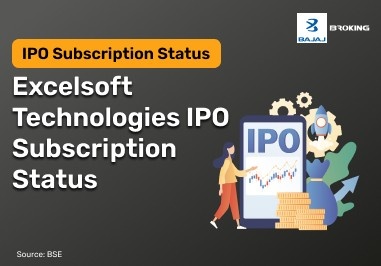Top 5 Communication Stocks in India You Should Know
The following table presents a list of top communication sector companies in India, based on market capitalisation. It includes details such as last traded price, recent percentage change, 52-week high and low, and the industry segment each company belongs to.
Company Name
| Last Price (₹)
| % Change
| 52 wk High (₹)
| 52 wk Low (₹)
| Market Cap (₹ cr)
| Segment
|
Bharti Airtel
| 1,757.30
| 2.42
| 1,778.95
| 1,201.30
| 1,019,265.15
| Telecommunication - Service Provider
|
Indus Towers
| 373.40
| 0.86
| 460.70
| 292.00
| 98,509.00
| Telecommunication - Equipment
|
Vodafone Idea
| 7.18
| 1.13
| 19.15
| 6.60
| 77,790.30
| Telecommunication - Service Provider
|
Bharti Hexacom
| 1,506.60
| 5.13
| 1,606.20
| 755.20
| 75,330.00
| Telecommunication - Equipment
|
Bharti Air PP
| 1,314.00
| 3.01
| 1,395.00
| 816.65
| 51,546.60
| Telecommunications Services
|
Source: MoneyControl as of 11 Apr’25
Overview of Communication Stocks
This brief table offers a simplified view of select communication stocks in India. It highlights each company’s last traded price and overall market capitalisation to aid in quick comparison.
Company Name
| Last Price (₹)
| Market Cap (₹ cr)
|
Bharti Airtel
| 1,757.30
| 1,019,265.15
|
Indus Towers
| 373.40
| 98,509.00
|
Vodafone Idea
| 7.18
| 77,790.30
|
Bharti Hexacom
| 1,506.60
| 75,330.00
|
Bharti Air PP
| 1,314.00
| 51,546.60
|
Source: MoneyControl
Bharti Airtel
Bharti Airtel operates as one of India's leading telecom services providers through its mobile services and broadband operations and enterprise solutions and DTH division. The company has established technological dominance and operates its extensive network throughout India as well as South Asia.
Key Financial Highlights:
Metric
| Value
|
Market Cap (₹ Cr)
| 1,018,859
|
Last Traded Price (₹)
| 1,756.60
|
52-Week High (₹)
| 1,779.00
|
52-Week Low (₹)
| 1,210.35
|
TTM EPS (₹)
| 42.42
|
PE Ratio (TTM)
| 41.41
|
Price-to-Book Value
| 11.70
|
Dividend Yield (%)
| 0.46
|
Debt-to-Equity Ratio
| 1.50
|
Return on Equity (%)
| 7.39
|
1-Year Performance (%)
| 45.84
|
Source: MoneyControl
Highlights:
● Strong revenue base of ₹1,49,982 crore and profit of ₹5,848 crore.
● Promoter holding slightly reduced from 53.14% to 53.12% in Dec 2024.
● Operating in all major telecom segments including mobile, broadband, enterprise, and digital TV.
Bharti Air PP
Bharti Airtel PP (Partly Paid) shares represent a partly-paid equity offering, typically issued during rights issues. These instruments are tied to Bharti Airtel but trade independently until the full amount is paid up by investors.
Key Financial Highlights:
Metric
| Value
|
Market Cap (₹ Cr)
| 51,530
|
Last Traded Price (₹)
| 1,313.60
|
52-Week High (₹)
| 1,336.00
|
52-Week Low (₹)
| 1,095.85
|
Book Value Per Share (₹)
| 0.00
|
Return on Equity (%)
| 1.92
|
Net Profit (₹ Cr)
| -9
|
Debt-to-Equity Ratio
| 0.47
|
Source: MoneyControl
Highlights:
● Not included in major benchmark indices.
● Limited financial data disclosed; shares are traded under series E1 on NSE.
● Typically used for capital raising from existing shareholders.
Bharti Hexacom
Bharti Hexacom operates in the telecom infrastructure segment and provides mobile services primarily in Rajasthan and the Northeast. A subsidiary of Bharti Airtel, it supports rural and semi-urban connectivity.
Key Financial Highlights:
Metric
| Value
|
Market Cap (₹ Cr)
| 75,237
|
Last Traded Price (₹)
| 1,504.75
|
52-Week High (₹)
| 1,609.30
|
52-Week Low (₹)
| 755.00
|
TTM EPS (₹)
| 24.96
|
PE Ratio (TTM)
| 60.29
|
Price-to-Book Value
| 14.47
|
Debt-to-Equity Ratio
| 1.04
|
Return on Equity (%)
| 10.87
|
Net Profit (₹ Cr)
| 504
|
Source: MoneyControl
Highlights:
● High valuation relative to earnings and book value.
● Promoter holding stable at 70% as of Dec 2024.
● Currently not listed on NIFTY or SENSEX, but part of broader indices like BSE 500.
Vodafone Idea
Vodafone Idea is one of India’s oldest GSM service providers, currently undergoing operational and financial restructuring. It operates pan-India with a customer base in prepaid, enterprise, and IoT services.
Key Financial Highlights:
Metric
| Value
|
Market Cap (₹ Cr)
| 77,681
|
Last Traded Price (₹)
| 7.17
|
52-Week High (₹)
| 19.18
|
52-Week Low (₹)
| 6.61
|
Book Value Per Share (₹)
| -13.12
|
Return on Equity (%)
| 0.00
|
Net Profit (₹ Cr)
| -31,232
|
Revenue (₹ Cr)
| 42,651
|
Debt-to-Equity Ratio
| -1.99
|
Source: MoneyControl
Highlights:
● Heavily loss-making with a shrinking book value and negative net worth.
● Company recently allocated equity shares to the Department of Investment and Public Asset Management (DIPAM).
● Promoter holding stable at 38.80% as of March 2025.
Indus Towers
Indus Towers Ltd is one of the world’s largest telecom tower companies, formed through the merger of Bharti Infratel and Indus Towers. It supports India's mobile infrastructure through shared tower resources.
Key Financial Highlights:
Metric
| Value
|
Market Cap (₹ Cr)
| 98,574
|
Last Traded Price (₹)
| 373.65
|
52-Week High (₹)
| 460.35
|
52-Week Low (₹)
| 292.00
|
TTM EPS (₹)
| 37.93
|
PE Ratio (TTM)
| 9.85
|
Price-to-Book Value
| 3.48
|
Return on Equity (%)
| 22.32
|
Net Profit (₹ Cr)
| 6,036
|
Revenue (₹ Cr)
| 28,600
|
Source: MoneyControl
Highlights:
● One of the most efficiently run tower infrastructure firms in India.
● Promoter holding reduced to 50% in Dec 2024, indicating potential dilution or stake offloading.
● Low valuation with high return metrics and earnings visibility.
How to Invest in Communication Stocks?
To invest in communication stocks, follow these steps:
1. Open a Demat Account: Start by opening a demat account or trading account to facilitate buying and selling of shares.
2. Choose Stocks: Select stocks based on factors like market position, financial health, and growth potential. Companies like Bharti Airtel and Vodafone Idea (VI) are prominent players in the sector.
3. Use Analytical Tools: Utilize a brokerage calculator to assess costs and potential returns.
4. Consider Trading Strategies: While intraday trading can be lucrative, it's risky; focus on long-term growth unless you have experience with active trading strategies.
5. Monitor Market Trends: Keep up-to-date with market news and trends to make informed decisions. There may not be an upcoming IPO in the sector, but existing stocks offer opportunities for investment.
Conclusion
With increasing telecom penetration, digital expansion, and government focus on improving network infrastructure, communication stocks may see structural tailwinds. Investors using a demat account and trading account can explore these opportunities across different timeframes, from intraday trading to long-term holdings. Tools like a brokerage calculator help in planning trades efficiently, while features such as MTF provide margin flexibility. Keep an eye on sector-specific upcoming IPO announcements to stay ahead in this evolving space.
Other Popular Stocks in India
Beyond the top five by market capitalization, several other communication sector companies play significant roles in India's telecom landscape. Investors often consider these stocks for various trading strategies and investment opportunities.
● Tata Communications: A global digital ecosystem enabler offering services in network, cloud, and IoT.
● RailTel Corporation of India Ltd.: A government-owned telecom infrastructure provider with a pan-India optic fiber network.
● Tejas Networks: Specializes in optical and wireless networking products, contributing to India's telecom backbone.
● HFCL (Himachal Futuristic Communications Ltd.): Engaged in manufacturing telecom equipment and providing turnkey solutions.
● ITI Limited: A state-owned telecom equipment manufacturer with a legacy in India's communication sector.
Investors interested in buying such stocks would first need to have a demat account and trading account for effecting transactions. Methods such as a brokerage calculator can be used to estimate the charge on intraday trading and Margin Trading Facility (MTF) options.















